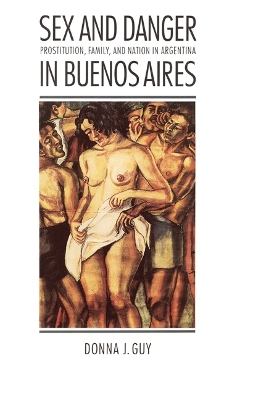Engendering Latin America
2 total works
Donna J. Guy first looks at Latin American women from a general and international perspective. She explores which paradigms are most useful in studying gender history in Latin America. She also addresses the evolution of the Pan-American Child Congresses as well as the politics of Pan-American cooperation in relation to child welfare issues. Later essays focus on Argentina in the nineteenth and twentieth centuries. Guy looks at how women were affected by systems of forced labor, and she illuminates changes in the concept of patria potestad, or the right of male heads of households to control family members' labor. Other essays address such issues as public health, white slavery, and public notions of motherhood in Argentina.
Donna J. Guy looks at many aspects of the debate that followed an escalating demand for prostitutes by Argentines and European immigrants. She discusses the widespread fear of white slavery, the merits of medically supervised municipal houses of prostitution, the rights of local governments to restrict the civil liberties of citizens and foreigners, the censorship of literature and music dealing with the plight of prostitutes, and the potential criminality of unsupervised working women who might abandon their families. Guy also describes attempts to deal with female prostitution: rehabilitation, modifications of municipal bordello laws, and medical programs to prevent the spread of venereal disease. She makes clear that the treatment of "marginal" women by liberal politicians and doctors helped promoted policies of repression and censorship that would later be extended to other unacceptable social groups. Her study of how both local and national government in Argentina dealt with these women reveals important links between gender, politics, and economics.

